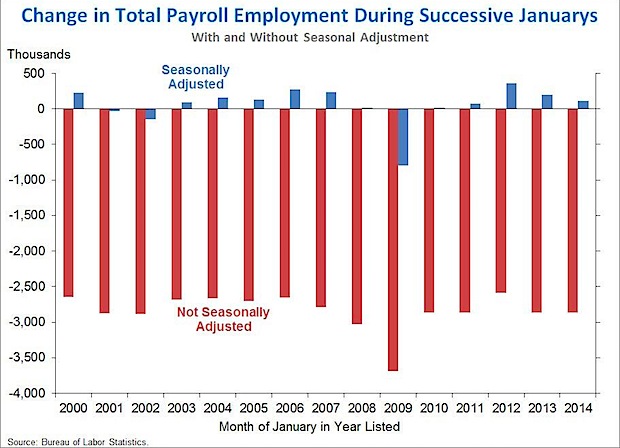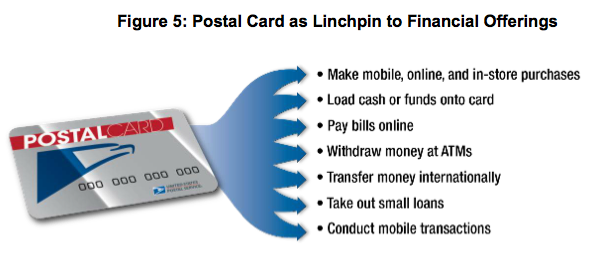‘Tis the season, it seems, for high-minded new media launches. Last week Arianna Huffington unveiled her new website, The World Post, in front of a group of well-fed plutocrats in Davos; this week it’s the turn of Ezra Klein to announce that he’s going to build a new news site under the Vox Media umbrella, and for Pierre Omidyar to release a video outlining his own journalistic ambitions.
In each of these cases, the principles of the sites are pretty much indistinguishable from the principals of the sites. Omidyar is by far the most ambitious: he wants to build a global news organization with multiple brands, deep pockets, fearless journalists, top-notch support services, and even its own technology company. You can see how he could get to $250 million pretty quickly, at that rate. That’s a lot of cash — but it’s still less than a single year’s journalism budget for Bloomberg, Reuters, or the BBC. Omidyar needs to make his money go a long way: he’s building not only an international virtual newsroom (with real physical newsrooms in more than one city) but also an elaborate technology, sales, and even legal infrastructure.
Klein’s venture, while ambitious, is not quite as ambitious as Omidyar’s. Rather than building his own infrastructure, he’s using Jim Bankoff’s, at Vox: that’s surely a good idea for anybody who doesn’t consider himself first and foremost to be a technologist. And rather than trying to be all things to all people, Klein is taking the thing that he’s best at — clear explanatory journalism — and simply extending it into new areas.
Most interestingly, Klein is ditching what he calls “the constraint of newness”. He has been talking about this for many years now, and he’s absolutely right: what most people want to know, when they’re reading about (say) the riots in Kiev, is not some incremental news article about what has changed in the past few hours. And yet that’s generally what they get. Here’s what he wrote back in 2010:
If I edited a major publication — or even a medium-size one — I would begin each major legislative battle by detailing a few of my smartest, clearest writers to create a hyperlinked, fairly comprehensive, summary of the basic legislation. That summary would be updated throughout the process, and it would be linked in every single story written on the topic. As reader questions came in, and points of confusion arose, it would be expanded, so by the end, you’d have a document that was current, comprehensive, navigable and responsive to the questions people actually had about the legislation. Telling people what just happened is undeniably important, but given that most people aren’t following that closely, we in the media need to do a better job of telling people what’s been happening.
Expand that vision beyond just legislation to news more generally, and I think you’ll have a pretty good idea of what Klein’s going to try to build at Vox. It’s an exciting move for Klein, who gets to try to reinvent the way that journalism is done on the internet, and it’s pretty much a no-brainer for Bankoff, who, like Omidyar, has calculated that it’s a lot more efficient to build than it is to buy. Vox Media will have 100% ownership of Klein’s operation, and also gets to turbocharge its growth by allowing Klein to use Vox’s proven technology. As a result, Bankoff’s return on investment could be very substantial indeed.
And then there’s the World Post, which is a joint venture of Huffington Post and something called the Berggruen Institute on Governance. BIG is the main project these days of Nicolas Berggruen, who’s almost a caricature of Davos Man: a billionaire financier, industrialist, philanthropist and all-round schmoozer with an unparalleled rolodex. Berggruen had a byline on the World Post’s lead story, the day the site was launched, and the tone is unmistakeable: “China,” he declares in his opening sentence, “looms larger than ever”. He then continues in this vein for another 2,400 words, concluding boldly:
The next ten years under Xi Jinping will be the ultimate test of whether China’s system of governance ends up on the wrong or right side of history. Either outcome will fundamentally affect the state of our world.
This is Davos bloviation masquerading as journalism, complete with boldface names:
Along with other members of the Berggruen Institute’s 21st Century Council, we had the opportunity to gain a firsthand glimpse into the mindset of China’s new leadership during a rare, wide-ranging discussion with Xi Jinping… We also met with Premier Li Keqiang as well as top generals of the People’s Liberation Army and other ranking officials from National People’s Congress as well as governors and Party secretaries from Zhejiang, Guangdong and Yunnan provinces.
There’s lots, lots more where that came from: similarly vapid articles have already been contributed to the World Post by a host of Davos types such as Bill Gates, Fernando Henrique Cardoso, Yo-Yo Ma, Elon Musk, Larry Summers, Richard Branson, Parag Khanna, and many others. Call it the International Brotherhood of Privilege.
The thing that makes Berggruen so very Davos is not just that he knows all these people, but rather that he only knows these people. If you live your life shuttling from private jet to Four Seasons suite, you end up in an echo chamber where everybody is urbane and friendly and comfortable, and where it seems crazy that big problems can’t get ironed out in a rational manner with the application of a little goodwill and a fair amount of high-minded talk.
That idea is the driving force behind Davos, and it’s also the driving force behind the World Post. If you weren’t invited to Davos, and want exposure to the kind of stuff that’s said on Davos panels, then you should definitely be reading lots of World Post articles. Similarly, if you’re Nicolas Berggruen, and you think that the kind of thing that’s said on Davos panels is incredibly important and deserving of wide distribution, then you’ll set up the World Post with Arianna Huffington, in the hope that a decent chunk of her 95 million global readers will find your stuff and read it.
From Huffington’s perspective, the whole thing is a win-win-win. She gets a bunch of new bigwigs blogging for her site; she gets an entree into Berggruen’s rarefied social circle (and also into his private jet); and she gets a substantial check every year from Berggruen, who will happily pay for HuffPo employees to man the phone banks, ready and willing to take dictation from any plutocrat who wants to share his opinion on the state of the world.
As a business model, the World Post is fascinating: it’s essentially low-priced native advertising for Berggruen. He’s subsidizing the site to the tune of about $850,000 per year; while I’m sure that’s very welcome income for the Huffington Post, it’s also a veritable bargain for a brand wanting to permanently sponsor an entire HuffPo vertical.
In any case, between these three sites, we have a pretty broad range of business models for those who would aspire to the Reithian project of informing the world about what’s important. Any one of them might be considered a random folly, but if all three are happening at once, then we might as well declare a trend. As David Carr says,
With high broadband penetration, the web has become a fully realized consumer medium where pages load in a flash and video plays without stuttering. With those pipes now built, we are in a time very similar to the early 1980s, when big cities were finally wired for cable. What followed was an explosion of new channels, many of which have become big businesses today.
It’s not unreasonable to think that at least some high-quality journalism will make its way into the list of the big digital-media businesses of the future. Certainly Pierre Omidyar and Jim Bankoff and Ezra Klein and Nicolas Berggruen and Arianna Huffington think that it will. It might take a while to get there. But the potential global audience is exploding, and for the first time it’s possible to imagine a digitally-native journalism venture being genuinely global. It’s an enticing dream — and it’s reasonable to expect that someone will get it right.








I think it’s a bad apperception to think “it’s Janet Yellen’s job to find work for those [unemployed & underemployed] people.”